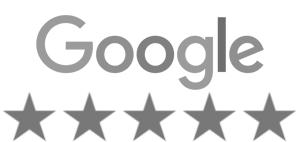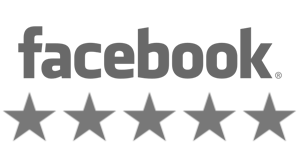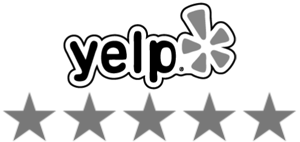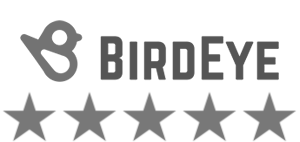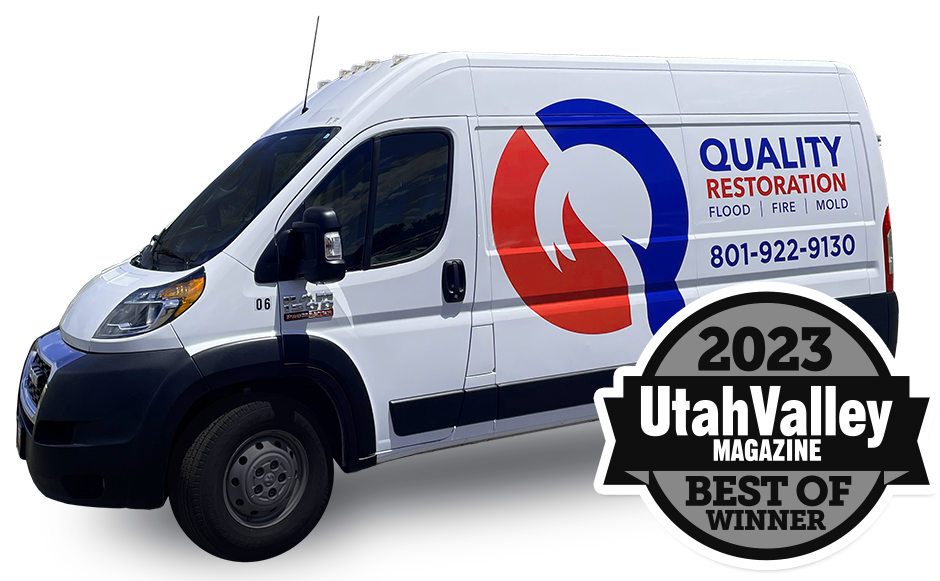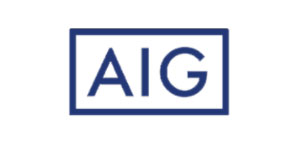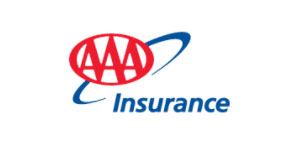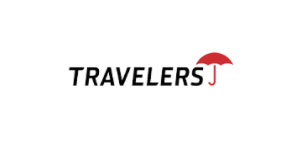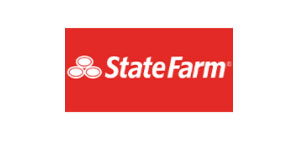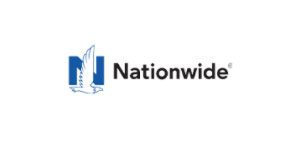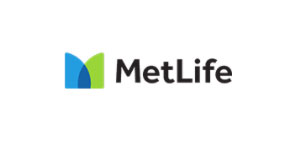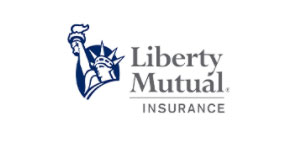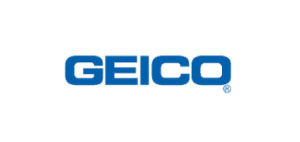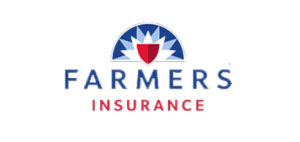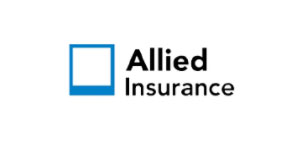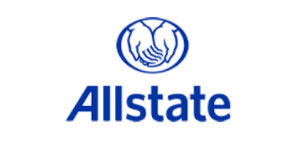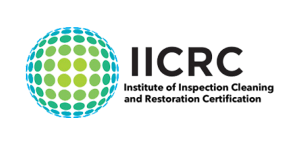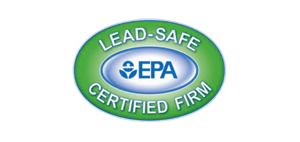A house fire can be one of the most overwhelming experiences a homeowner will ever face. In just minutes, years of memories, personal belongings, and the safety of your home can be threatened or destroyed. The emotional toll is heavy, but knowing what to do next, and where to turn for fire damage restoration in Utah, can help you regain control and start rebuilding with confidence.
This guide will walk you through the steps to take after fire damage from safety precautions and insurance claims to the fire restoration process itself. Whether you live in Springville, Provo, or anywhere in Utah County, you’ll find local, practical advice to help your family recover with confidence.
Let’s begin with what matters most: your safety and immediate next steps.
Immediate Next Steps After a House Fire
Ensure Everyone Is Safe
- Make sure all family members and pets are accounted for and safe. Seek medical attention if anyone is experiencing burns, smoke inhalation, or shock.
Wait for Fire Officials to Declare It Safe
- Never re-enter your home until the fire department gives you clearance. Structural damage and lingering smoke or gases can be dangerous.
Secure the Property (if safe to do so)
- If possible, board up broken windows or doors to prevent theft or further damage. Some restoration companies (like ours) offer emergency board-up services.
Contact Your Insurance Company
- Report the fire as soon as possible. Your insurer will guide you through the claim process and may recommend approved restoration contractors.
Document the Damage
- Take clear photos and videos of each affected area. List all damaged or destroyed items this will help with your claim and reimbursement.
Call a Fire Damage Restoration Company
- The sooner cleanup begins, the better. Smoke and soot can permanently stain surfaces, and water used to extinguish the fire can lead to mold.
Arrange Temporary Housing if Needed
- Your insurance may cover hotel stays or short-term rentals. Ask your agent for available options and keep all receipts.
These early steps will help you stay safe, protect your property, and start the recovery process with the right documentation and support.
Types of Fire & Smoke Damage (and How They’re Cleaned)
Not all fire damage is the same. Understanding the types of damage your home may face will help you know what to expect during cleanup and restoration:
🔥 1. Structural Fire Damage
Fires can weaken or destroy framing, drywall, flooring, and roofing materials. Restoration teams will inspect for:
- Charred wood or exposed framing
- Weakened drywall or ceilings
- Compromised floor joists or supports
Solution: Damaged structures may need to be removed, rebuilt, or reinforced. Safety always comes first.
🧱 2. Smoke Damage
Smoke spreads rapidly and can settle deep into porous materials like drywall, upholstery, and carpet. Different types of smoke cause different problems:
- Dry smoke from fast-burning fires leaves powdery residue
- Wet smoke from smoldering fires leaves sticky, smeary soot
- Protein smoke from kitchen fires has a strong odor and can discolor paint and varnish
Solution: Restoration includes using HEPA vacuums, dry sponges, ozone treatments, and thermal foggers to eliminate soot and odors.
💧 3. Water Damage from Firefighting
Water used to extinguish the fire can soak floors, walls, and insulation. This can lead to mold if not handled correctly.
Solution: Water extraction, drying, and dehumidification must happen right away. Thermal imaging can identify hidden moisture.
💨 4. Odor Damage
Lingering smoke odor is common even after the visible cleanup is done.
Solution: Professional deodorizing treatments like hydroxyl generators, air scrubbers, and sealed encapsulants help eliminate odor at the source.
🧸 5. Content Damage
Personal items like clothes, electronics, furniture, and keepsakes may be damaged or contaminated.
Solution: Restoration teams may clean and pack out salvageable items. Textiles can be washed with ozone or ultrasonic systems. Unsalvageable items will be inventoried for your insurance claim.
By understanding what kinds of damage occur after a fire, you’ll be better prepared to work with your restoration team and make smart choices about what can be cleaned, what must be replaced, and how to move forward safely.
Insurance Guide for Fire Damage
Fire damage can be expensive but your insurance is there to help. Understanding your policy and knowing how to file a claim correctly can make a big difference.
What Homeowners Insurance Typically Covers:
- Damage to the structure of your home (walls, roof, framing)
- Smoke and soot cleanup
- Firefighting-related water damage
- Personal belongings (furniture, clothing, electronics)
- Temporary housing and living expenses (called “Loss of Use”)
What’s Often Not Covered:
- Long-term smoke odor if left untreated
- Items not listed or valued properly in your policy
- Pre-existing or unrelated damage
How to File a Fire Insurance Claim:
- Notify your insurance provider immediately. Provide details and ask for next steps.
- Secure the property. Boarding up broken areas shows you’re preventing further damage.
- Document everything. Photos, videos, and a room-by-room list of damaged items are essential.
- Request an adjuster. They’ll visit to assess damage and determine coverage.
- Keep all receipts. This includes lodging, meals, clean-up services, and replacement items.
- Work with a restoration company. Many, including Quality Restoration, assist in providing paperwork, estimates, and photos for your insurer.
Tips to Speed Up Your Claim:
- Be thorough and organized from the start
- Ask your restoration company to document the process
- Follow up consistently with your insurance contact
- Don’t throw anything away until the adjuster has seen it
Pro Tip: If you have high-value items (jewelry, collectibles, art), make sure they’re listed on a rider in your policy. These often need separate coverage.
Recovering after a fire is hard enough, your insurance claim shouldn’t make it harder. By taking quick action and partnering with a trusted team for fire damage restoration in Utah, you can avoid delays and get back on track faster.
Fire Damage Restoration in Utah: Room by Room
Every room reacts differently to fire, smoke, and water damage. A good restoration plan treats each area individually based on the damage type and materials involved.
🛋 Living Room
- Likely damage: Soot-stained walls, melted electronics, smoke-logged furniture
- Restoration steps:
- HEPA vacuuming and dry sponge wiping on walls
- Smoke odor removal from upholstery
- Electronics removed for evaluation or replacement
🍳 Kitchen
- Likely damage: Grease fires, protein smoke, discolored appliances, burned cabinets
- Restoration steps:
- Deep cleaning with degreasers and enzyme cleaners
- Removal of soot from ceilings and vents
- Appliance inspection and repair/replacement
🛏 Bedrooms
- Likely damage: Smoke in fabrics and bedding, potential ceiling damage
- Restoration steps:
- Air scrubbers to remove odors
- Textiles sent for ozone cleaning
- HEPA vacuuming of carpets and mattresses (or replacement if heavily damaged)
🛁 Bathroom
- Likely damage: Heat warped fixtures, smoke in cabinetry
- Restoration steps:
- Cleaning with antimicrobial solutions
- Inspection of plumbing and ventilation for damage
🧰 Basement / Utility Rooms
- Likely damage: Water damage from firefighting efforts, smoke in HVAC systems
- Restoration steps:
- Water extraction and structural drying
- Inspection and cleaning of HVAC units and ducts
- Mold prevention treatments
Each room requires a customized approach. A trained team specializing in fire damage restoration in Utah knows how to restore safely, minimize disruption, and document everything thoroughly for your insurance provider.
Want to ensure your home is brought back to life the right way? Contact us 24/7 for emergency response and complete fire restoration services in Utah County.
Smoke Odor & Air Quality: What You Need to Know
Even after the fire is out and the visible damage is cleaned, the smell of smoke often lingers. This isn’t just an inconvenience it’s a sign that harmful particles may still be present in your home’s air and surfaces.
Why Smoke Odor Sticks Around
Smoke particles are extremely small so tiny they can seep deep into:
- Drywall and insulation
- Upholstery, curtains, and carpets
- Ductwork and HVAC systems
These particles cling to porous materials and surfaces, making them difficult to remove with standard cleaning products.
Health Risks from Lingering Smoke
The odor is unpleasant, but it can also be unhealthy. Lingering smoke can lead to:
- Coughing, headaches, and irritated eyes
- Worsened asthma or allergy symptoms
- Long-term exposure risks for vulnerable individuals
How Professionals Remove Smoke Odor
Fire damage restoration companies use industrial-grade tools to completely remove smoke from your home:
- Ozone treatments: Break apart smoke molecules and neutralize odors
- Thermal fogging: Sends a deodorizing mist into hidden spaces like behind walls or inside vents
- HEPA air scrubbers: Filter smoke particles from the air
- Encapsulation: Seals in any residual odors on wood, framing, or drywall
Don’t Forget the HVAC System
Your home’s vents can spread smoke throughout every room. A professional HVAC cleaning includes:
- Ductwork inspections and soot removal
- Filter replacement
- Fogging or sanitizing the entire system to stop odor recirculation
What to Do With Personal Belongings After a Fire
After a fire, sorting through your damaged belongings can be emotional and overwhelming. While it’s tempting to try to save everything, knowing how to evaluate and handle items properly can make a big difference in your recovery.
Step 1: Create an Inventory
Walk through each room if safe and list everything that was damaged. Start with essential items like:
- Clothing
- Electronics
- Furniture
- Appliances
- Family keepsakes
Take photos and note the condition of each item. This will be critical for your insurance claim.
Step 2: Sort Items into Three Categories
- Cleanable – Light smoke damage or washable items
- Restorable – Needs professional cleaning (e.g., electronics, upholstery, books)
- Replace – Burned or soaked items beyond repair
Your restoration company can help assess what’s salvageable with specialized equipment and cleaning methods.
Step 3: Focus on Essentials First
Prioritize retrieving critical items such as:
- Medications
- Legal documents
- ID cards or passports
- Financial records
- Photos or irreplaceable keepsakes
Store these in a clean, dry area away from the damaged zone.
Step 4: Let the Professionals Handle Specialty Cleaning
Some items require more than a DIY wipe-down. Restoration companies use:
- Ultrasonic cleaning for jewelry and electronics
- Dry cleaning for textiles and clothing
- Document recovery systems for papers, books, and photos
Trying to clean these yourself could cause more harm.
Step 5: Dispose of Hazardous or Contaminated Items
Throw away anything that poses a health risk, including:
- Food exposed to heat, smoke, or water
- Burned plastic or rubber
- Damaged batteries or electronics that may short-circuit
Why Hire a Fire Damage Restoration Company in Utah
After a fire, it’s tempting to try to clean things up yourself but fire damage restoration is a complex job that goes beyond scrubbing soot. Hiring a professional restoration company ensures your home is cleaned, repaired, and made safe as quickly and thoroughly as possible.
1. Faster Response and Recovery
Restoration companies offer 24/7 emergency services. That means someone can be on-site within hours not days to start the cleanup process. The sooner restoration begins, the more damage you can prevent.
2. Expert Assessment of Damage
Smoke and water damage often go deeper than what’s visible. Trained professionals know how to find hidden damage in:
- Walls and insulation
- Ducts and HVAC systems
- Electrical and plumbing systems
Early detection prevents long-term structural issues or mold growth.
3. Safe and Specialized Cleaning
Fire residue can contain toxic chemicals. Restoration teams use commercial-grade equipment and protective gear to:
- Remove soot safely
- Eliminate smoke odor
- Sanitize surfaces
- Prevent cross-contamination between clean and damaged areas
4. Help Navigating Insurance Claims
A good fire restoration company will work directly with your insurance adjuster, providing:
- Detailed documentation of the damage
- Inventory of affected items
- Repair estimates to support your claim
This takes the burden off your shoulders and speeds up the process.
5. Local Knowledge You Can Trust
Choosing a local company like Quality Restoration means working with people who:
- Understand Utah’s climate risks (like dry air and wildfire season)
- Are familiar with local building codes and insurance practices
- Rely on community reputation not shortcuts
Fire Prevention Tips & Fire-Safe Practices
While no one plans for a house fire, many are preventable with simple safety habits. Use the tips below to protect your family and reduce fire risks at home especially during Utah’s dry seasons or colder months when heating systems are in use.
Kitchen Safety
- Never leave cooking unattended. Fires can start in seconds if oil or grease overheats.
- Keep flammable items away from stovetops like towels, paper, and curtains.
- Clean your oven and stove regularly to prevent buildup of grease and crumbs.
Electrical Safety
- Don’t overload outlets or power strips.
- Replace damaged cords or plugs immediately.
- Avoid running cords under rugs or furniture where they can overheat.
Heating Safety
- Keep space heaters at least 3 feet away from anything flammable.
- Don’t leave heaters or fireplaces running when you’re asleep or out of the house.
- Get your furnace inspected annually especially before winter.
Candle & Fireplace Safety
- Never leave a lit candle unattended.
- Place candles and fire pits on stable, fire-resistant surfaces.
- Use a screen on fireplaces to contain sparks and embers.
Smoke Alarms & Extinguishers
- Install smoke detectors in every bedroom and hallway.
- Test alarms monthly and replace batteries twice a year.
- Keep a working fire extinguisher in the kitchen and garage.
Create a Fire Escape Plan
- Make sure every family member knows two ways out of each room.
- Designate a meeting place outside the home.
- Practice your escape plan twice a year.
Wildfire Safety in Utah
- Clear dry brush, leaves, and flammable materials at least 30 feet from your home.
- Use fire-resistant landscaping and roofing materials where possible.
- Follow local burn restrictions and stay updated during wildfire season.
🔥 Fire Damage Restoration in Utah – FAQs
What should I do immediately after a house fire?
Ensure everyone is safe and wait for fire officials to declare the area secure. Once it’s safe, contact your insurance provider and a licensed company that offers fire damage restoration in Utah to begin the recovery process.
Does homeowners insurance cover fire damage?
Yes, most standard homeowners insurance policies cover structural damage, smoke and soot cleanup, water damage from firefighting, and temporary housing. Be sure to document everything and speak with your adjuster early in the process.
Can I stay in my home after a fire?
That depends on the extent of the damage. If there’s lingering smoke, structural issues, or health risks, it’s safest to relocate until fire damage restoration professionals have cleared the space.
How long does fire damage restoration in Utah take?
The timeline varies based on the severity. Minor smoke cleanup might take a few days, while full restoration after significant fire and water damage may take several weeks or more.
What items can be salvaged after a fire?
Items like clothing, electronics, and furniture may be cleaned or restored depending on the level of smoke or heat exposure. A restoration team can help evaluate and recover salvageable belongings.
Why hire a professional fire damage restoration company in Utah?
Professionals have the tools, training, and experience to safely clean soot, eliminate smoke odor, prevent mold from water damage, and navigate insurance claims , all while protecting your health and your home.
